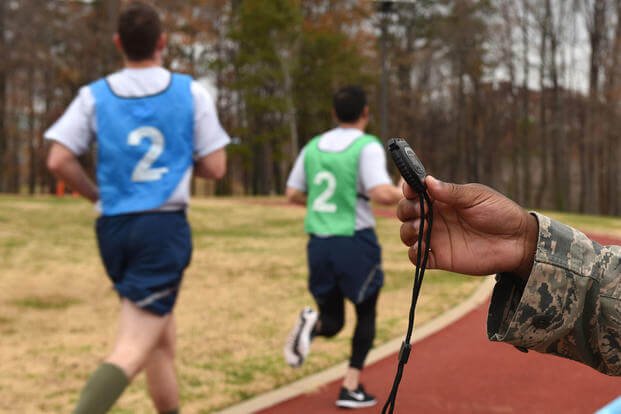As with any cardiovascular activity if you are going to perform for several minutes or even a few hours, you need to find a sustainable pace. Here is an email from someone who enjoys running with a group but struggles with running alone:
Hey Stew - When I run with my group of friends, I am always faster than when I run alone. It seems my group pushes me harder than when I run by myself. Do you have any advice on getting a better running workout when alone? - Tom
Great question, Tom. I have struggled with this one as well so I formed a group locally where we are challenging each other constantly in running, swimming, weightlifting and calisthenics. Personally, now I train harder on my own in order to compete with the faster, younger runners. Here is how I do it:
Normally we run the same routes. When we are together running, I make landmarks and time checks to see how my speed is. So usually at a mile marker, I can find out whether I am at a sub-seven-minute mile pace. The group typically hits this mark repeatedly. So on my own, I go to a track and work on my speed and pace and push myself for a six- to 6:30-minute mile pace. For instance:
Repeat 5-6 times.
-
Quarter-mile run (90-95 seconds)
-
Cooldown jog for an eighth of a mile
Then I see whether I can pull it all together with a sub-seven-minute mile pace for 2-3 miles. This pace may be too fast or too slow for you, depending on your running level and experience, so I recommend running the original route you and your friends like to run and mark off time checks at certain landmarks (intersections, flagpoles, someone's house, etc.).
Then see whether you can push yourself to match those scores the next time you run alone.
I often have used the stopwatch as a training guide for various events, especially physical fitness tests. When I do sit-ups, I try to find my goal pace that will get me to 100 sit-ups in two minutes. This is 25 in 30 seconds or 50 in one minute. I repeat those sets a few times in my PT workouts and compete with no one but myself and my watch.
The same can be done with swimming, biking and running. Find a pace you like to strive for and divide that distance by a number that makes sense and work several sets of that pace into a workout. Like this:
Swimming a 500-meter swim: Divide the swim into 5 x 100-meter sets or 10 by 50-meter sets. If your goal is to swim in the 8-8:30 mark, then shoot for a pace of 50 meters in 50 seconds. In the end, you should be at 500 seconds (8:20) for 500 meters. Your multiple sets of swimming at that pace soon will be easier to maintain.
Running a three-mile run: Divide the run into half- or three-quarters of a mile segments and do a workout called "repeats." Basically, run a half-mile 5-6 times or three-quarters of a mile four times, both at your goal three-mile pace. These workouts will challenge you, and you may need to rest in between for a 200- to 400-meter walk to catch your breath, but as you practice these run or swim sets, you will find maintaining a faster pace while running gets much easier.
Hang in there and keep practicing to learn a pace. Feel free to email me if you have any questions at stew@stewsmith.com. I will try to answer them all or even create a new article out of them if the question inspires me.
Stew Smith is a former Navy SEAL and fitness author certified as a Strength and Conditioning Specialist (CSCS) with the National Strength and Conditioning Association. Visit his Fitness eBook store if you're looking to start a workout program to create a healthy lifestyle. Send your fitness questions to stew@stewsmith.com.
Want to Learn More About Military Life?
Whether you're thinking of joining the military, looking for fitness and basic training tips, or keeping up with military life and benefits, Military.com has you covered. Subscribe to Military.com to have military news, updates and resources delivered directly to your inbox.



















